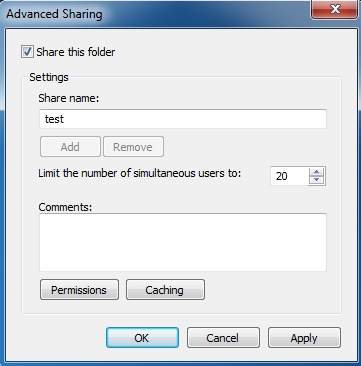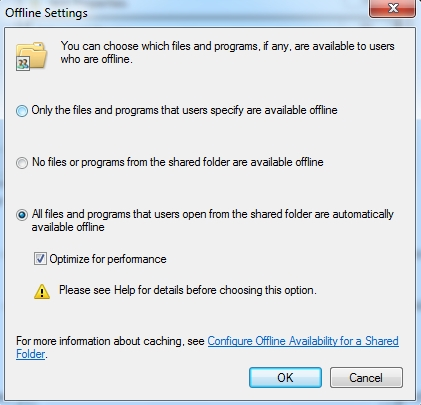Microsoft 98-368 Exam Practice Questions (P. 5)
- Full Access (66 questions)
- Six months of Premium Access
- Access to one million comments
- Seamless ChatGPT Integration
- Ability to download PDF files
- Anki Flashcard files for revision
- No Captcha & No AdSense
- Advanced Exam Configuration
Question #21
Your new Windows 8.1 computer is connected to your home wireless network.
You want to share music and photos on your new computer with other members of your family. You want to avoid setting up separate user accounts for each member of your family. A single password for all the shared files will suffice.
Which Windows 8.1 networking feature satisfies these requirements?
You want to share music and photos on your new computer with other members of your family. You want to avoid setting up separate user accounts for each member of your family. A single password for all the shared files will suffice.
Which Windows 8.1 networking feature satisfies these requirements?
- ANetwork Discovery
- BHomeGroup
- CVirtual Private Network
- DBroadband (PPPoE)
Correct Answer:
B
A homegroup makes it easier to share files and printers on a home network. You can share pictures, music, videos, documents, and printers with other people in your homegroup. Other people can't change the files that you share, unless you give them permission to do so.
Reference:
http://windows.microsoft.com/en-us/windows7/what-is-a-homegroup
B
A homegroup makes it easier to share files and printers on a home network. You can share pictures, music, videos, documents, and printers with other people in your homegroup. Other people can't change the files that you share, unless you give them permission to do so.
Reference:
http://windows.microsoft.com/en-us/windows7/what-is-a-homegroup
send
light_mode
delete
Question #22
This question requires that you evaluate the underlined text to determine if it is correct.
You manage Windows 8.1 desktop and laptop computers in your university's computer lab.
The university's IT team recently implemented an active directory environment.
You need to join the desktop and laptop computers to a new Active Directory domain.
You should use the "Network and Internet" Control Panel applet to achieve this goal.
Instructions: Review the underlined text. If it makes the statement correct, select "No change is needed". If the statement is incorrect, select the answer choice than makes the statement correct.
You manage Windows 8.1 desktop and laptop computers in your university's computer lab.
The university's IT team recently implemented an active directory environment.
You need to join the desktop and laptop computers to a new Active Directory domain.
You should use the "Network and Internet" Control Panel applet to achieve this goal.
Instructions: Review the underlined text. If it makes the statement correct, select "No change is needed". If the statement is incorrect, select the answer choice than makes the statement correct.
- ANo change is needed
- BUser Accounts
- CAdministrative Tools
- DSystem
Correct Answer:
D
Join a domain, workgroup, or homegroup
1. Open System by swiping in from the right edge of the screen, tapping Search (or if you're using a mouse, pointing to the upper-right corner of the screen, moving the mouse pointer down, and then clicking Search), entering System in the search box, and tapping or clicking System.

2. Under Computer name, domain, and workgroup settings, click Change settings.
You might be asked for an admin password or to confirm your choice.
3. Click Network ID and follow the steps on your screen.
Reference:
http://windows.microsoft.com/en-us/windows-8/join-domain-workgroup-homegroup
D
Join a domain, workgroup, or homegroup
1. Open System by swiping in from the right edge of the screen, tapping Search (or if you're using a mouse, pointing to the upper-right corner of the screen, moving the mouse pointer down, and then clicking Search), entering System in the search box, and tapping or clicking System.

2. Under Computer name, domain, and workgroup settings, click Change settings.
You might be asked for an admin password or to confirm your choice.
3. Click Network ID and follow the steps on your screen.
Reference:
http://windows.microsoft.com/en-us/windows-8/join-domain-workgroup-homegroup
send
light_mode
delete
Question #23
You have several Windows 8.1 Pro computers in your college dorm.
You want to share music library files across these computers in a simple way by using a single password for access.
What should you do?
You want to share music library files across these computers in a simple way by using a single password for access.
What should you do?
- AShare the folder with the Everyone group
- BChange the permissions of all music files to Everyone read
- CShare the music library through a HomeGroup and join each computer to it
- DRename each computer to a single, common name and enable the Administrator
Correct Answer:
C
A homegroup is a group of PCs on a home network that can share devices (such as printers), and libraries (such as your Documents, Pictures, Music, and Video libraries). Using a homegroup makes sharing easier. Your homegroup is protected with a password, which you can change at any time.
Reference: Homegroup Password - View in Windows 8
http://www.eightforums.com/tutorials/15855-homegroup-password-view-windows-8-a.html
C
A homegroup is a group of PCs on a home network that can share devices (such as printers), and libraries (such as your Documents, Pictures, Music, and Video libraries). Using a homegroup makes sharing easier. Your homegroup is protected with a password, which you can change at any time.
Reference: Homegroup Password - View in Windows 8
http://www.eightforums.com/tutorials/15855-homegroup-password-view-windows-8-a.html
send
light_mode
delete
Question #24
Your sister is taking a video editing class at school. She purchased a 2-TB USB hard drive to store video files. She wants to connect it to her Windows 8.1 computer at home and to a Mac OSX 10.3 computer at school. Video file will exceed 5 GB in size.
You need to prepare a new hard drive by formatting it with the appropriate file system.
Which file system should you choose?
You need to prepare a new hard drive by formatting it with the appropriate file system.
Which file system should you choose?
- AFAT
- BReFS
- CNTFS
- DFAT32
Correct Answer:
C
Mac OSX 10.3 supports NTFS.
NTFS supports large files well above 5 GB.
Incorrect answers:
Not A: FAT does not support a 5 GB file size.
Not B: ReFS is only supported by Microsoft Windows.
Not C:
Not D: FAT32 works fine if file sizes are smaller than 4GB.
C
Mac OSX 10.3 supports NTFS.
NTFS supports large files well above 5 GB.
Incorrect answers:
Not A: FAT does not support a 5 GB file size.
Not B: ReFS is only supported by Microsoft Windows.
Not C:
Not D: FAT32 works fine if file sizes are smaller than 4GB.
send
light_mode
delete
Question #25
This question requires that you evaluate the underlined text to determine if it is correct.
You have a Windows 8.1 computer in a WorkGroup. To share the C:\Work folder and make it available to offline users, you need to use the "public" share option.
Instructions: Review the underlined text. If it makes the statement correct, select "No change is needed". If the statement is incorrect, select the answer choice than makes the statement correct.
You have a Windows 8.1 computer in a WorkGroup. To share the C:\Work folder and make it available to offline users, you need to use the "public" share option.
Instructions: Review the underlined text. If it makes the statement correct, select "No change is needed". If the statement is incorrect, select the answer choice than makes the statement correct.
- ANo change is needed
- Badvanced
- CHomeGroup
- Dbasic
Correct Answer:
B
In the advanced sharing dialog box Click on "Caching" button. In "Offline settings" dialog box, you can set up caching for files and programs which are offline.

You have the following options:
i) Only the files and programs that users specify are available offline: If you select this option then, users specify the files and programs which can be accessed offline. It is the default option. ii) No files or programs from the share are available offline: If you select this option then, caching will be turned off. iii) All files and programs that users open from the share are automatically available offline: If you select this option then, caching is turned on for all files and programs and they can be accessed offline. Check option "Optimize for performance".

Reference: How to set advanced sharing options, custom permissions, caching for folder in Windows 7? http://www.moreprocess.com/operating-systems/windows-7/how-to-set-advanced-sharing-options-custom-permissions-caching-for-folder-in-windows-7
B
In the advanced sharing dialog box Click on "Caching" button. In "Offline settings" dialog box, you can set up caching for files and programs which are offline.

You have the following options:
i) Only the files and programs that users specify are available offline: If you select this option then, users specify the files and programs which can be accessed offline. It is the default option. ii) No files or programs from the share are available offline: If you select this option then, caching will be turned off. iii) All files and programs that users open from the share are automatically available offline: If you select this option then, caching is turned on for all files and programs and they can be accessed offline. Check option "Optimize for performance".

Reference: How to set advanced sharing options, custom permissions, caching for folder in Windows 7? http://www.moreprocess.com/operating-systems/windows-7/how-to-set-advanced-sharing-options-custom-permissions-caching-for-folder-in-windows-7
send
light_mode
delete
All Pages
